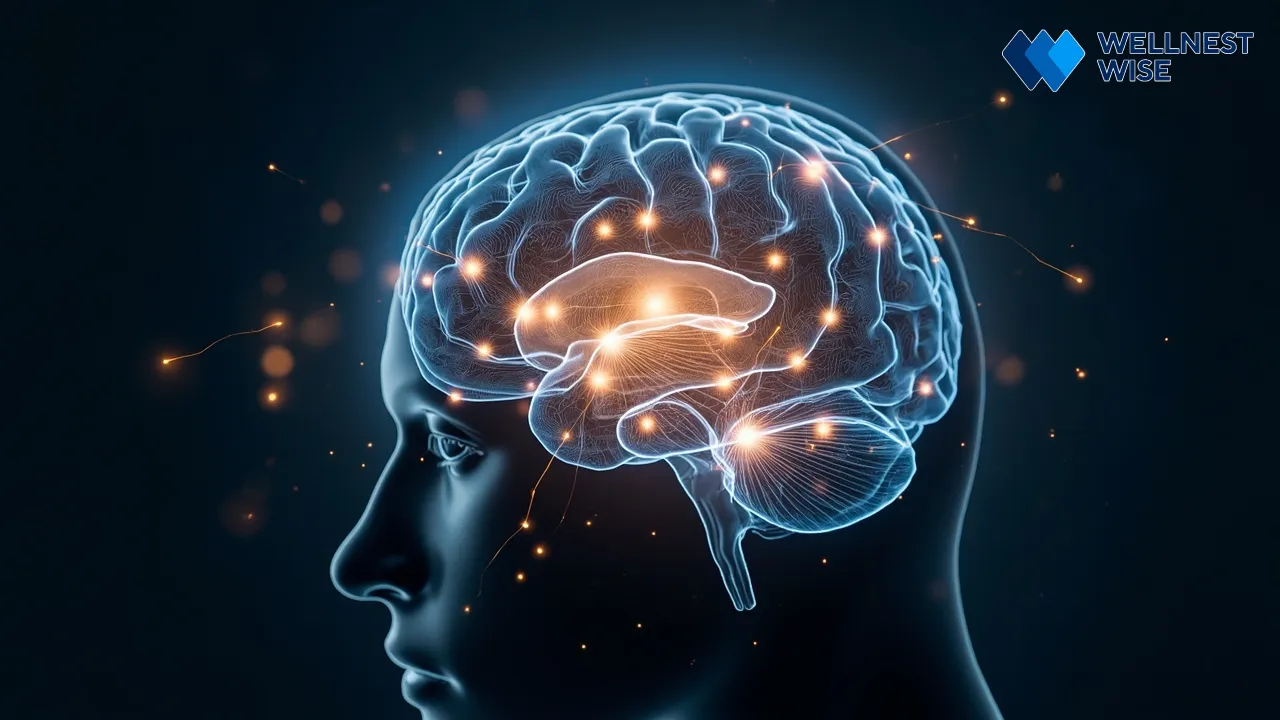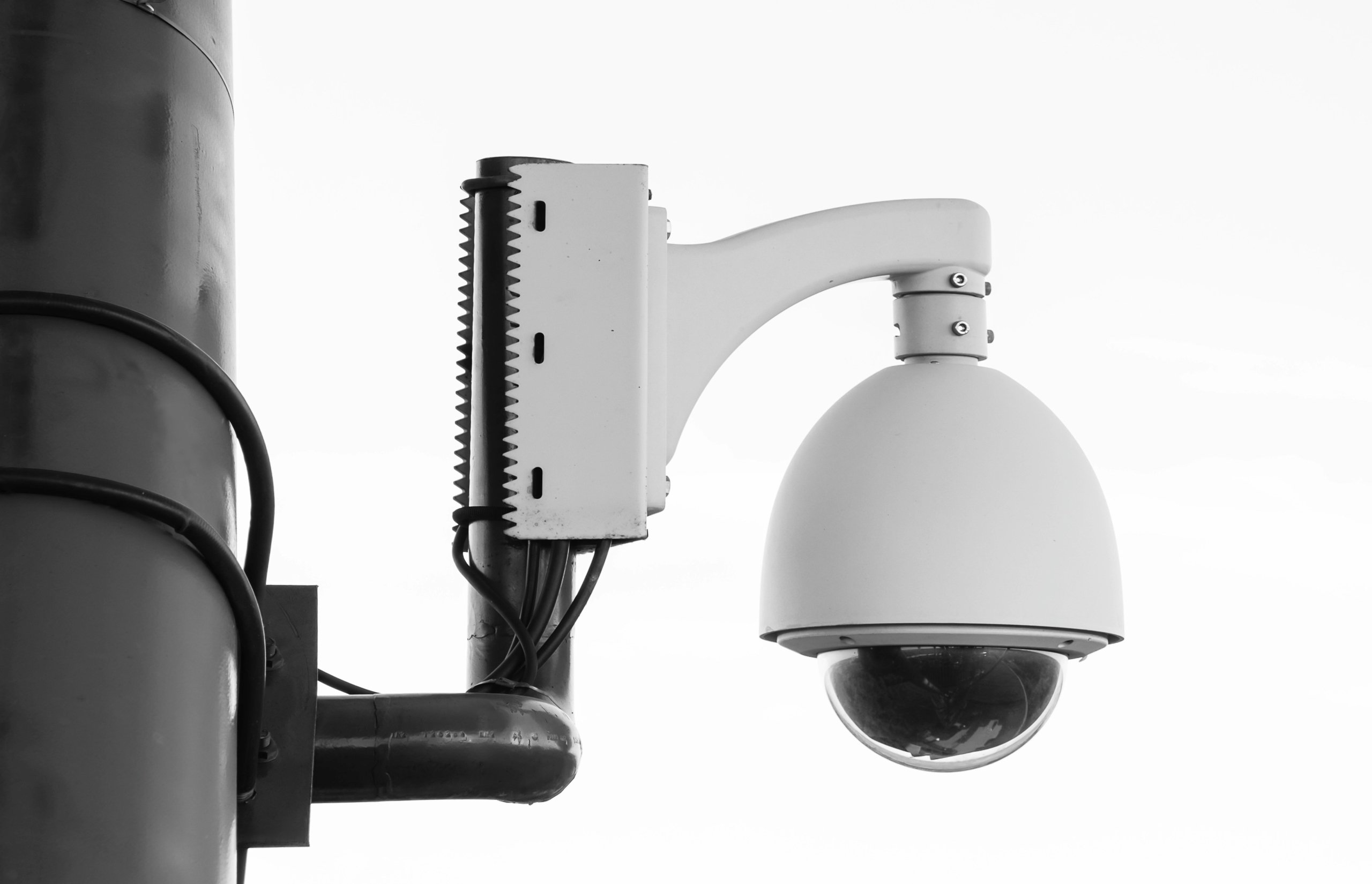Pain is a relentless intruder, especially at night. For the millions globally, including many in Iran, who grapple with chronic pain insomnia, the struggle is real and profoundly debilitating. Imagine lying awake, hour after hour, the throbbing or sharp ache in your body refusing to subside, preventing the deep, restorative sleep your system desperately needs. This isn’t just discomfort; it’s a vicious cycle where pain disrupts sleep, and fragmented sleep, in turn, amplifies pain sensitivity. Approximately 50–70% of chronic pain patients report clinically significant insomnia symptoms [PMC3046740], underscoring this pervasive challenge. Breaking free from this cycle isn’t easy, but it is entirely possible with the right strategies and understanding. Let’s explore how to reclaim your nights and diminish your pain.
The Bidirectional Link: How Chronic Pain Disrupts Sleep Architecture and Quality
Living with chronic pain often means living with poor sleep, a reality that can feel like a cruel double bind. This isn’t merely a coincidence; it’s a deeply intertwined, bidirectional relationship where each condition directly exacerbates the other. Understanding this complex interplay between your pain signals and your sleep patterns is the crucial first step toward finding relief, revealing how persistent discomfort can fundamentally alter your body’s ability to achieve truly restorative rest.

Unraveling the Pain-Sleep Nexus: A Scientific Perspective
At its core, the connection between pain and sleep is neurological and physiological. When your body is constantly signaling pain, it creates a state of heightened arousal that directly interferes with the intricate processes governing sleep. This isn’t just about discomfort keeping you awake; it’s about a cascade of biological responses that fundamentally alter your body’s sleep machinery.
How Nociception Overrides Restorative Sleep Cycles
Nociception, the processing of noxious stimuli by the nervous system, is designed to alert us to danger. However, in chronic pain, these signals become persistent, continuously activating the brain’s arousal systems. This constant barrage prevents the deep relaxation needed to transition into the various stages of sleep, particularly slow-wave (deep) sleep and REM sleep, both critical for physical and cognitive restoration. The result is often a fragmented and unrefreshing night, severely compromising your overall Sleep Architecture.
The Role of Inflammation and Stress Hormones (Cortisol) in Sleep Disruption
Beyond direct nerve signals, inflammation plays a significant role. Pro-inflammatory cytokines like interleukin-6 (IL-6) and tumor necrosis factor-alpha (TNF-alpha), often elevated in chronic pain conditions, are also implicated in sleep disruption [PMC3046740][NINDS]. These chemical messengers can interfere with sleep-wake cycles, promoting wakefulness. Additionally, persistent pain triggers the body’s stress response, leading to increased levels of Cortisol, the primary stress hormone. Elevated cortisol levels throughout the night can keep you alert and prevent the natural drop in heart rate and body temperature necessary for initiating and maintaining sleep.
Common Sleep Disturbances in Chronic Pain Sufferers
Individuals battling chronic pain frequently encounter a specific set of sleep disturbances that go beyond simply feeling tired. These issues don’t just reduce sleep quantity; they significantly diminish sleep quality and can become a central feature of living with persistent pain. A few years ago, I experienced a severe lower back injury that caused persistent pain, especially at night. At first, I did not connect the dots, but my sleep quality drastically deteriorated. I would lie awake for hours, unable to find a comfortable position, and when I finally fell asleep, I was frequently awakened by sharp pain.
- Difficulty Initiating Sleep (Sleep Onset Latency): It often takes chronic pain sufferers longer to fall asleep, as the body struggles to quiet down amidst persistent discomfort.
- Frequent Nocturnal Awakenings: Pain flares or even subtle shifts in position can jolt individuals awake throughout the night, fragmenting sleep and preventing continuous rest.
- Early Morning Awakenings: Waking up hours before the desired time, often accompanied by increased pain or stiffness, is common, contributing to reduced total sleep time.
- Non-Restorative Sleep: Even when sleep occurs, it often feels unrefreshing. The brain may not achieve sufficient deep sleep or REM sleep, leaving individuals feeling exhausted despite having spent time in bed. This is particularly prevalent in conditions like Neuropathic Pain, where nerve damage complicates both pain and sleep pathways, severely impacting overall Sleep Architecture.
The Impact of Fragmented Sleep on Pain Sensitivity and Perception
The effects of poor sleep don’t stop at just feeling tired. Fragmented sleep directly feeds back into the pain cycle, escalating its intensity and making it harder to manage. It’s a cruel feedback loop where each component makes the other worse.
Amplified Pain Signals: When Poor Sleep Exacerbates Nociceptive Input
Research unequivocally shows that sleep deprivation reduces pain threshold and significantly amplifies pain sensitivity through central sensitization mechanisms [PMC3046740]. This means that when you haven’t slept well, your nervous system becomes hypersensitive, making even mild pain feel much more intense. What might have been a manageable ache on a good night’s sleep can become an unbearable torment after a restless one. Over time, I noticed that the poor sleep made the pain feel worse during the day, creating a vicious cycle.
Circadian Rhythm Disruption and Its Influence on Pain Modulation
The body’s natural 24-hour Circadian Rhythm influences nearly every physiological process, including pain modulation. Chronic pain and poor sleep often throw this rhythm out of whack. A disrupted circadian rhythm can impair the body’s natural pain-relief systems, leading to more pronounced pain during specific times of the day or night. This misalignment also affects hormone release and nerve activity, further weakening your body’s inherent ability to cope with pain.
Cultivating a Sanctuary for Sleep: Essential Sleep Hygiene for Pain Management
Transforming your bedroom into a true sanctuary is more than just an aesthetic choice; it’s a strategic move for managing both pain and sleep. For those grappling with chronic pain, creating an optimal sleep environment and adopting rigorous sleep hygiene for chronic pain sufferers are not luxuries but necessities. These practices help quiet the body’s alarm systems, preparing it for restorative rest and, in turn, helping to soften the edges of persistent pain.

Optimizing Your Sleep Environment to Minimize Pain Triggers
Your immediate surroundings profoundly influence your ability to fall asleep and stay asleep. By making thoughtful adjustments to your bedroom, you can minimize external distractions and physical discomfort that often exacerbate pain.
Temperature, Light, and Sound: Creating a Conducive Atmosphere
Ideally, your bedroom should be a cool, dark, and quiet haven. Aim for a room temperature between 60-67°F (15-19°C), as a cooler environment facilitates the drop in core body temperature needed for sleep onset. Block out all external light with blackout curtains, and consider an eye mask. Minimize noise using earplugs, a white noise machine, or a fan. These elements reduce sensory input that can keep your brain active and intensify your awareness of pain.
Ergonomic Support: Mattress and Pillow Choices for Pain Relief
The right mattress and pillow can make an immense difference. While personal preference varies, generally, a mattress that offers both support and pressure relief is best for chronic pain. Test out different firmness levels and materials (memory foam, latex, innerspring) to find what minimizes pressure points and aligns your spine. Similarly, your pillow should support the natural curve of your neck without elevating your head too much or too little, maintaining proper spinal alignment to prevent morning stiffness and pain.
Establishing a Consistent Sleep-Wake Routine for Better Circadian Rhythm Alignment
Our bodies thrive on predictability. A regular sleep schedule is one of the most powerful tools for recalibrating your Circadian Rhythm, which in turn supports better sleep quality and can even influence pain perception.
The Power of Regularity: Aligning with Your Natural Sleep Cycles
Going to bed and waking up at the same time every day, even on weekends, helps regulate your internal body clock. This consistency strengthens your Circadian Rhythm, teaching your body when to expect sleep and wakefulness. Over time, this makes falling asleep easier and promotes more consolidated, restorative sleep. It’s about gently nudging your body back into its natural rhythm.
Limiting Stimulants and Heavy Meals Before Bedtime
What you consume before bed significantly impacts your ability to sleep. Avoid caffeine and nicotine several hours before sleep, as these stimulants interfere with sleep onset and quality. Alcohol might initially make you feel drowsy, but it disrupts later sleep stages, leading to fragmented rest. Similarly, heavy, spicy, or sugary meals close to bedtime can cause indigestion and discomfort, making it difficult for your body to fully relax. Opt for a light, easily digestible snack if you must eat.
Mindful Wind-Down Practices for a Pain-Free Transition to Sleep
The hour or so before bed is prime time for transitioning your mind and body from active engagement to peaceful rest. For chronic pain sufferers, this “wind-down” period is vital for minimizing pain-related anxiety and physical tension.
The Benefits of a Relaxing Pre-Sleep Ritual
Developing a consistent pre-sleep ritual signals to your body that it’s time to prepare for sleep. This might include a warm bath or shower (which can also soothe sore muscles), reading a calming book, listening to soft music, or engaging in gentle stretching. These activities help to lower stress levels, reduce muscle tension, and shift your focus away from pain, facilitating a smoother transition into sleep.
Avoiding Blue Light Exposure and Digital Devices
The blue light emitted from smartphones, tablets, and computer screens can suppress the production of melatonin, the hormone responsible for signaling sleep to your brain. Avoid digital devices for at least an hour before bed. Instead, choose analog activities like reading a physical book or journaling. This allows your brain to naturally wind down and prepare for sleep without artificial stimulation.
The Mind-Body Connection: Harnessing Inner Resources for Pain and Sleep Relief
The connection between your mind and body is incredibly powerful, especially when it comes to managing chronic pain insomnia. It’s not just about what happens physically; how you think about your pain and respond to it can significantly alter your experience and your ability to sleep. By cultivating inner resources through specific mind-body techniques, you can gain a greater sense of control, quiet the nervous system, and create a more hospitable environment for both pain relief and peaceful sleep.

Cognitive Behavioral Therapy for Insomnia (CBT-I): A Gold Standard Approach
Cognitive Behavioral Therapy for Insomnia (CBT-I) is widely recognized as the most effective non-pharmacological treatment for chronic insomnia, and its benefits extend significantly to those with chronic pain [Sleep Foundation]. It empowers you to challenge unhelpful thought patterns and modify behaviors that perpetuate the pain-insomnia cycle.
Reframing Painful Thoughts: Cognitive Restructuring Techniques for Sleep
Often, pain is accompanied by negative thoughts (“I’ll never sleep,” “My pain is unbearable”). CBT-I helps you identify and challenge these thoughts through cognitive restructuring. By learning to reframe catastrophic thinking into more balanced, realistic perspectives, you can reduce anxiety, which is a major barrier to sleep. This process helps to quiet the mind’s incessant chatter, making it easier for your body to relax into sleep despite pain.
Behavioral Strategies: Stimulus Control and Sleep Restriction Protocols
CBT-I also incorporates practical behavioral strategies. Stimulus control helps you re-associate your bed with sleep and relaxation, not pain or wakefulness. This includes getting out of bed if you can’t sleep within 20 minutes and returning only when drowsy. Sleep restriction temporarily limits your time in bed to increase your sleep drive, gradually increasing it as your sleep efficiency improves. These protocols, while challenging initially, are highly effective in consolidating sleep and breaking negative sleep habits.
Mindfulness and Meditation: Quieting the Mind-Body Link for Pain Management
Mindfulness involves bringing your attention to the present moment without judgment. For chronic pain, it means observing sensations without getting caught in the emotional distress they can cause. This helps to create a psychological distance from pain, which can ease both physical tension and the struggle to sleep.
Guided Meditations and Body Scans for Pain Awareness and Acceptance
Guided meditations, particularly body scans, can be incredibly beneficial. By systematically focusing attention on different parts of your body, you can become more aware of sensations, including pain, but in a non-reactive way. This practice encourages acceptance rather than resistance, which can reduce the suffering associated with pain and promote deep relaxation, preparing your body for rest.
Deep Breathing Exercises to Activate the Parasympathetic Nervous System
Simple deep breathing exercises activate the parasympathetic nervous system, the body’s “rest and digest” system. Slow, diaphragmatic breathing lowers heart rate, reduces blood pressure, and calms the stress response. Practicing deep breathing before bed can help dissipate physical tension and mental anxiety, making the transition to sleep smoother.
Gentle Movement and Stretching: Easing Physical Tension Before Bed
While intense exercise might exacerbate pain for some, gentle movement and stretching can be profoundly beneficial for chronic pain sufferers. It improves circulation, reduces muscle stiffness, and releases natural pain-relieving endorphins. This experience highlighted how pain and poor sleep are deeply intertwined and need concurrent management rather than isolated treatment. Seeking help, I engaged in physical therapy combined with cognitive-behavioral techniques for insomnia, which together helped me regain better sleep and reduce my pain sensitivity.
Yoga and Tai Chi Adaptations for Chronic Pain Sufferers
Mindful movement practices like adapted Yoga and Tai Chi can be excellent for easing chronic pain and promoting sleep. These disciplines emphasize slow, deliberate movements, gentle stretching, and synchronized breathing. They improve flexibility, balance, and strength without putting excessive strain on the body. Many poses can be modified to accommodate various pain levels and physical limitations, making them accessible even for those with significant pain.
The Importance of Listening to Your Body’s Signals During Exercise
It’s crucial to approach any physical activity with mindfulness, especially when managing chronic pain. Listen closely to your body’s signals. Pain is a message, and while some discomfort might be part of stretching, sharp or increasing pain means you should stop or modify the movement. The goal is to gently mobilize your body, not to push through pain, ensuring that exercise aids relaxation rather than causing further distress.
Nutritional Support and Lifestyle Adjustments for Pain-Related Insomnia
What you put into your body directly impacts how it functions, including its ability to manage pain and achieve restorative sleep. Adopting an anti-inflammatory diet for pain and sleep can be a game-changer, providing the foundational support your body needs to heal, reduce pain signals, and regulate sleep cycles more effectively. Beyond food, thoughtful lifestyle adjustments further reinforce these benefits, creating a comprehensive approach to breaking the cycle of chronic pain insomnia.

Anti-Inflammatory Diet: Fueling Your Body for Pain Reduction and Better Sleep
Chronic pain often involves underlying inflammation. By choosing foods that reduce inflammation and avoiding those that promote it, you can potentially lessen pain intensity and create a better physiological environment for sleep.
| Food Category | Foods to Emphasize | Foods to Limit | Impact on Inflammation, Pain, & Sleep |
|---|---|---|---|
| :——————- | :————————————————————————————— | :—————————————————————————– | :————————————————————————————————————————————————————————————————————————————————————————- |
| Proteins/Fats | Omega-3 rich fatty fish (salmon, mackerel), flax seeds, chia seeds, walnuts, avocado oil | Processed meats (sausage, bacon), excessive red meat, trans fats (fried foods) | Omega-3s reduce inflammatory mediators; healthy fats support cell function. Processed meats and trans fats often increase inflammation, which exacerbates pain and disrupts Sleep Architecture. |
| Fruits & Veggies | Dark leafy greens (spinach, kale), berries, cherries, broccoli, bell peppers | None (emphasize variety and quantity) | Rich in antioxidants and phytonutrients that combat oxidative stress and inflammation, directly aiding pain reduction. Cherries contain natural Melatonin, promoting better sleep. |
| Grains/Carbs | Whole grains (oats, brown rice, quinoa), legumes | Refined grains (white bread, pasta), sugary cereals, excessive added sugars | Provide sustained energy and fiber. Refined grains and sugars cause blood sugar spikes, leading to inflammatory responses and energy crashes that can disrupt sleep patterns and worsen pain perception. |
| Spices | Turmeric, ginger, cinnamon | Excessive sodium, artificial sweeteners | Possess potent anti-inflammatory properties. Turmeric, in particular, contains curcumin, a powerful anti-inflammatory compound that can help alleviate pain and create a better state for sleep. |
Key Nutrients and Supplements Supporting Sleep and Pain Management
While a balanced diet is paramount, certain nutrients and natural remedies for pain insomnia can offer targeted support, especially for individuals whose bodies might be depleted due to chronic illness or stress. Always consult a healthcare professional before starting any new supplement.
Melatonin: Understanding its Role in Circadian Rhythm and Sleep Regulation
Melatonin is a hormone naturally produced by the pineal gland, primarily responsible for regulating your Circadian Rhythm and signaling to your body that it’s time to sleep. For those with disrupted sleep patterns due to pain, a low-dose melatonin supplement might help to re-establish a healthy sleep-wake cycle. It’s often most effective when taken 30-60 minutes before your desired bedtime, signaling the body to prepare for rest.
Magnesium and Other Micronutrients for Muscle Relaxation and Nerve Function
Magnesium is a vital mineral involved in over 300 biochemical reactions in the body, including muscle and nerve function, blood glucose control, and blood pressure regulation. Many people with chronic pain are deficient in magnesium, which can exacerbate muscle tension and restless leg syndrome, both of which hinder sleep. Supplementing with magnesium (e.g., magnesium glycinate for better absorption and fewer digestive issues) can promote muscle relaxation and calm the nervous system. Other micronutrients like Vitamin D and B vitamins also play roles in mood, nerve health, and sleep, making a comprehensive approach beneficial.
Hydration and Its Impact on Overall Well-being and Sleep Quality
Often overlooked, adequate hydration is fundamental to every bodily function, including pain perception and sleep quality. Dehydration can exacerbate pain, cause muscle cramps, and lead to fatigue, all of which interfere with sleep.
Optimal Fluid Intake Throughout the Day for Body Homeostasis
Aim to drink plenty of water throughout the day. Water helps transport nutrients, regulate body temperature, lubricate joints, and remove waste products. Staying well-hydrated ensures optimal bodily homeostasis, which can contribute to reduced pain and better energy levels, indirectly supporting more restorative sleep. Listen to your body’s thirst signals and carry a water bottle as a reminder.
Avoiding Excessive Fluids Before Bed to Prevent Nocturnal Awakenings
While daytime hydration is crucial, timing your fluid intake is key. Limiting fluids in the couple of hours leading up to bedtime can significantly reduce the need for nighttime bathroom trips, which are a common cause of nocturnal awakenings. This simple adjustment can help maintain a more continuous sleep pattern, allowing for deeper and more restful sleep.
When to Seek Professional Guidance: Advanced Interventions for Chronic Pain Insomnia
While self-management strategies are powerful, there comes a point when the complexity of chronic pain insomnia necessitates professional intervention. Recognizing when to seek expert evaluation is crucial for comprehensive insomnia pain management. Healthcare professionals can offer advanced diagnostic tools, specialized therapies, and pharmacological approaches, tailoring a plan that addresses your unique challenges and moves beyond mere symptom relief toward sustainable improvement.

Identifying the Need for Expert Evaluation and Diagnosis
The persistent nature of chronic pain and its impact on sleep can mask other underlying issues. A professional can help differentiate the various factors at play and develop a targeted treatment plan.
Red Flags: When to Consult a Pain Specialist or Sleep Physician
If your pain-related insomnia significantly impacts your daily functioning, mood, or overall quality of life despite consistent self-management efforts, it’s time to seek expert help. Red flags include: consistently taking longer than 30 minutes to fall asleep, waking up more than a few times per night due to pain, sleep that feels non-restorative, or experiencing excessive daytime sleepiness or fatigue. A pain specialist can evaluate the source and nature of your pain, while a sleep physician can diagnose sleep disorders that might be co-occurring.
Differentiating Pain-Related Insomnia from Other Primary Sleep Disorders
It’s important for a professional to determine if your insomnia is primarily a consequence of pain or if you also suffer from a primary sleep disorder like sleep apnea or restless legs syndrome. These conditions require specific treatments that differ from strategies for pain-related insomnia. A sleep study (polysomnography) might be recommended to accurately diagnose any underlying sleep disorders, ensuring that all contributing factors are addressed.
Pharmacological Approaches: Benefits, Risks, and Considerations
For some, medication becomes a necessary component of managing chronic pain insomnia. However, it’s crucial to approach pharmacological interventions with a balanced perspective, weighing the benefits against potential risks and side effects.
Pain Medications and Their Potential Impact on Sleep Architecture
Many pain medications, while alleviating discomfort, can paradoxically interfere with Sleep Architecture. Opioids, for instance, can reduce REM sleep and cause sleep-disordered breathing. Non-steroidal anti-inflammatory drugs (NSAIDs) can sometimes cause gastrointestinal upset, interrupting sleep. Discuss with your doctor how your current pain regimen might be affecting your sleep and explore alternatives or adjustments that minimize sleep disruption. The goal is to manage pain effectively without sacrificing restorative sleep.
Sleep Aids for Chronic Pain: A Balanced Perspective on Usage and Side Effects
Sleep aids for chronic pain can provide short-term relief, but their long-term use often carries risks. While some antidepressants (like tricyclics or certain SSRIs) at low doses can improve both pain and sleep, they carry risks of side effects and should be used with caution [NINDS]. Benzodiazepines and “Z-drugs” (e.g., zolpidem) can induce sleep but may lead to dependence, tolerance, and rebound insomnia, especially when used long-term. They also don’t typically improve deep or restorative sleep. A physician can help you understand the appropriate use, potential side effects, and strategies for safely tapering off these medications.
Integrated Care Teams: A Holistic Approach to Managing Complex Conditions
The intricate nature of chronic pain insomnia rarely responds to a single solution. An integrated, multidisciplinary approach is often the most effective path to sustainable relief and improved quality of life.
The Value of Collaboration: Physicians, Therapists, and Registered Dietitians
An integrated care team brings together specialists who address different facets of your condition. This might include a pain specialist, a sleep physician, a psychologist trained in CBT-I, a physical therapist for gentle movement, and a registered dietitian for nutritional support. This collaborative approach ensures that your treatment plan is comprehensive, addressing physical, psychological, and lifestyle factors simultaneously, rather than in isolation.
Personalized Treatment Plans for Sustainable Relief and Improved Quality of Life
The ultimate goal is to develop a personalized treatment plan that caters to your specific type of pain, sleep challenges, and lifestyle. This isn’t a one-size-fits-all solution but a dynamic process that involves ongoing assessment and adjustments. By working with a team, you can achieve not just temporary relief, but a sustainable improvement in your pain management, sleep quality, and overall well-being, reclaiming control over your health.
Conclusion & Takeaways
The pervasive cycle of chronic pain insomnia can feel overwhelming, but it is not an unbreakable chain. We’ve seen how pain relentlessly disrupts your Sleep Architecture and how, in turn, fragmented sleep intensifies your pain perception. This bidirectional link underscores the critical need for a comprehensive, integrated approach. By embracing meticulous sleep hygiene, harnessing the power of mind-body techniques like CBT-I and mindfulness, adopting an anti-inflammatory diet, and knowing when to seek professional guidance, you equip yourself with the tools to significantly reduce your suffering.
Remember, regaining control over your sleep and pain is a journey, not a destination. Each small step—from optimizing your bedroom to reframing negative thoughts, choosing nutrient-rich foods, or consulting a specialized care team—contributes to profound and lasting change. Don’t underestimate your body’s innate capacity for healing and adaptation. Begin today, implementing even one new strategy, and take back your nights, one peaceful, restorative sleep at a time.
FAQ
How does chronic pain specifically disrupt sleep patterns and quality?
Chronic pain disrupts sleep by constantly activating the body’s arousal systems, leading to increased Cortisol levels and inflammation, which prevent relaxation and deep sleep stages. This constant nociceptive input makes it difficult to fall asleep, causes frequent awakenings, and reduces overall Sleep Architecture, resulting in non-restorative sleep. Sleep deprivation then, in turn, lowers the pain threshold, making pain feel more intense.
What holistic and natural methods can effectively manage pain to improve sleep?
Effective holistic methods include optimizing your sleep environment (cool, dark, quiet room, ergonomic mattress), establishing a consistent sleep schedule, and limiting stimulants. Mind-body techniques like Cognitive Behavioral Therapy for Insomnia (CBT-I), mindfulness meditation, and deep breathing exercises are highly effective. Additionally, an anti-inflammatory diet rich in omega-3s, antioxidants, and anti-inflammatory spices like turmeric, along with adequate hydration and targeted supplements like melatonin or magnesium (under professional guidance), can significantly support both pain reduction and sleep quality.
When should I seek professional medical help for pain-related insomnia?
You should seek professional guidance if your pain-related insomnia is severe, persistent, significantly impacting your daily life, or if self-management strategies aren’t providing adequate relief. Consulting a pain specialist or sleep physician is crucial if you experience chronic difficulty falling or staying asleep (e.g., taking over 30 minutes to fall asleep, frequent awakenings), severe daytime fatigue, or suspect an underlying sleep disorder like sleep apnea. An integrated care team can offer personalized, advanced interventions, including specialized therapies and judicious pharmacological approaches when necessary.














